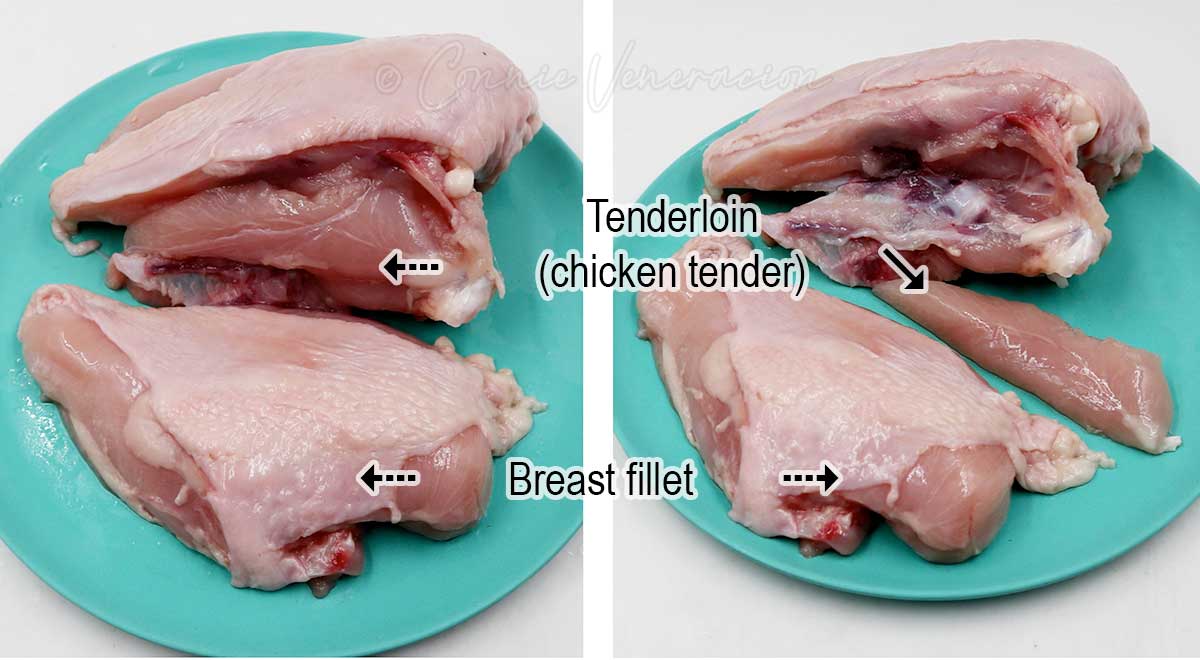Chicken tenders are a beloved menu item found everywhere from fast food joints to upscale restaurants. Their mild flavor tender texture, and ease of preparation make them an extremely versatile ingredient. But despite their popularity, many people don’t actually know what part of the chicken chicken tenders come from. This article will provide a complete guide to chicken tenders including what part of the chicken they come from, how they’re prepared, their nutritional value, and some tips for cooking them at home.
Where Do Chicken Tenders Come From on the Chicken?
Chicken tenders are cut from the pectoralis minor muscle, commonly referred to as the tenderloin or inner fillet. This is a long, thin strip of meat that runs along the breastbone of the chicken, underneath the larger pectoralis major muscle, or chicken breast.
The tenderloin is connected to the keel bone of the chicken’s breastplate. It allows the chicken to move its wings and is constantly worked during a chicken’s life, so it contains less connective tissue. This makes the meat extremely tender, fine-grained, and flavorful compared to other cuts. These attributes make the tenderloin perfectly suited for chicken tenders.
How Are Chicken Tenders Prepared?
Chicken tenders are prepared by removing the entire tenderloin from the chicken breast The tenderloin is then trimmed of any excess fat, sinew, or cartilage. It is cut widthwise into long, thin strips, usually around 3 to 4 inches long and 1 inch wide.
After cutting, the tenderloin strips are usually marinated or seasoned. This helps add flavor and keeps the strips moist while cooking. The strips are then coated in flour, breadcrumbs, or batter and fried until golden brown and crispy. Frying is the most common cooking method, but chicken tenders can also be baked or grilled.
Nutritional Profile of Chicken Tenders
A 3-ounce serving of fried chicken tenders contains approximately:
- Calories: 220
- Protein: 17g
- Fat: 14g
- Carbs: 12g
Chicken tenders are a lean, high-quality protein source. However, the breading and frying process does increase the fat and carb content compared to a grilled chicken breast. The protein in chicken tenders contains all the essential amino acids and is easy for our bodies to digest and absorb.
Tips for Cooking Chicken Tenders at Home
You can easily make restaurant-quality chicken tenders at home with just a few simple steps:
-
Buy whole tenderloins: It’s best to start with whole, fresh or frozen chicken tenderloins instead of pre-cut strips. This allows you to control the size and shape.
-
Season generously: Soak tenders in buttermilk or marinade then coat with seasoned flour or panko breadcrumbs. Seasonings like garlic powder, paprika, cayenne, and black pepper add lots of flavor.
-
Get the oil hot: Frying chicken tenders calls for oil between 350-375°F. Use a thermometer to ensure the temperature is right.
-
Fry in batches: Don’t crowd the pan. Fry chicken tenders in small batches to maintain oil temperature.
-
Rest tenders: Allow tenders to rest on a cooling rack after frying to help retain moisture and juice.
With the right prep, chicken tenders can be just as crispy, juicy, and delicious when made at home. Experiment with different seasoning blends and dipping sauces to find your favorite!
Chicken tenders come from the pectoralis minor or tenderloin muscle located underneath the chicken breast. This muscle lends the meat its signature tenderness and mild flavor. Tenders are prepared by cutting the tenderloin into long, thin strips, seasoning, then breading and frying. They are an extremely versatile ingredient that can be used in everything from kids’ meals to gourmet entrees. Follow these simple tips to enjoy restaurant-quality chicken tenders cooked up right in your own kitchen.

Definition and Characteristics of Chicken Tenders
Chicken Tender Meaning: Chicken tenders come from the pectoralis minor muscle under the chicken’s breast. Each chicken has exactly two tenders from this area. This muscle is known for being tender and delicate, making it a favorite for many recipes.
Chicken tenders can be cooked in several ways. Frying is the most common method, giving them a crispy, golden crust. Baking is a healthier option that also makes them crispy, but without the extra oil of frying.
Chicken tenders are not just tasty but also nutritious. They are packed with lean protein and have less fat than other chicken parts. Baked tenders keep important vitamins and minerals, helping to balance your diet. But, how they’re cooked affects their nutrition. Fried tenders have more calories and fat because of the oil used.
Knowing about chicken tenders, how they’re cooked, and their health benefits helps us make better choices. This knowledge is key to adding this versatile ingredient to our daily meals.
Why order chicken tenders at a restaurant #chickentenders
FAQ
What part of the chicken is in chicken tenders?
The whole or half of the breast deboned. Also known as chicken fingers, chicken goujons, chicken strips or chicken fillets, tenders are chicken meat prepared from the pectoralis minor muscles. These strips of white meat are located on either side of the breastbone, under the breast meat (pectoralis major).
Are chicken tenders just chicken breasts?
Some people think that chicken tenders are just strips cut from the breast of the chicken. But in fact, the tender or tenderloin is an independent secondary muscle that lies directly under the breast. Sometimes, the whole breast is removed, which includes the tender; sometimes they are removed separately.Oct 21, 2023
What cut of chicken do you use for tenders?
Chicken tenders are made from the tenderloin, which is a small strip of muscle located underneath the breast meat of the chicken. This part is known for being particularly tender and is often removed from the breast for cooking.
What’s the difference between tender chicken and normal chicken?
A chicken tender comes from the chicken’s back and is a single muscle group. They can be breaded or not. Chicken nuggets are puréed chicken that is always breaded.
